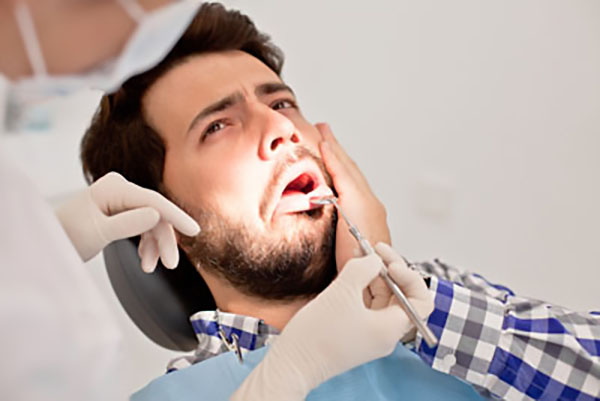A Dentist Explains How to Treat TMD Pain

Wanting more information from an actual dentist on treating pain associated with TMD? Many people confuse TMD with TMJ, which is understandable as the terms are very similar.
TMJ stands for the temporomandibular joint, which is located on both sides of the head and directly connects the jawbone to the skull. This joint plays a very important role as it controls the ability for the jaw to move properly, necessary for everyday actions like chewing and talking. When someone is experiencing problems with their TMJ, these problems are known as a TMJ disorder or simply TMD.
About TMD
Wondering if a dentist can help you deal with your TMD pain? TMD, aka temporomandibular joint disorder, refers to a dysfunction of the TMJ. When the temporomandibular joint is not functioning properly it directly affects the surrounding muscles, which is going to cause various levels of discomfort and/or pain anytime the jaw moves.
Some of the more common causes of TMD include being diagnosed with arthritis, an autoimmune disease, bruxism, having an infection in the mouth or experiencing some sort of jaw injury.
About TMD pain
Dental patients who receive a TMD diagnosis will experience some degree of pain. This makes it a good idea for patients to learn what options are available to them for reducing or even eliminating their jaw-related pain. Experiencing any type of jaw pain can really get in the way of one’s everyday life as even performing simple tasks like eating and talking can induce pain.
Patients often experience pain in or around their ear area, their jaw area, their neck area and even their shoulder area. They may also experience clicking when opening or closing their mouth, some swelling on one or both sides of their face and ongoing headaches.
Treating TMD pain
Those suffering from TMD have a few different options for treating their pain. In order for them to understand the options that will ideally work for them, a dental appointment is necessary. During this appointment they will be carefully evaluated, allowing a dentist to understand the severity of their TMD problems. Once the severity is understood, the treatment process can begin.
Common options for treating TMD include resting the jaw, using a heating pad or exercises that relax the jaw muscles, wearing a mandibular advancement device, wearing a bite guard, learning how to deal with stress, wearing invisible braces and taking over the counter medications. Surgery is always a last resort.
Are you currently suffering from TMD?
Ready to make an appointment with a dentist to address your TMD pain? The sooner you make an appointment, the sooner you can be on your way to being pain-free. Your first step is getting a proper diagnosis so that a treatment plan can be made for you.
As you can see by the above information, there are many options for treating TMD pain. The fact that TMD is a complicated condition makes it essential for anyone who is experiencing jaw pain to make an appointment with an experienced dentist for a professional evaluation.
Request an appointment here: https://totalcareimplantdentistry.com or call Total Care Dentistry & Implants at (760) 394-3088 for an appointment in our Palm Desert office.
Check out what others are saying about our services on Yelp: Read our Yelp reviews.
Recent Posts
Whether you recently had a tooth extraction or are preparing for the procedure, there are a few guidelines to follow after oral surgery. Properly caring for your health can help you recover as healthily as possible and reduce the risks of complications. Here are some tips to help you have a comfortable and speedy recovery.In…
For many people, dental anxiety is a significant barrier to getting the care they need, leading to more serious oral health issues. This fear or stress around dental visits can range from mild nervousness to intense apprehension, making it hard to schedule an appointment. However, understanding dental anxiety and learning how to manage it can…
When people hear the word tooth extraction, they often think of the potential discomfort it may cause. However, a key goal of tooth extraction is quite the opposite. Here is a closer look at tooth extraction and how it helps reduce dental pain.A dentist does not recommend a tooth extraction unless it is necessary. Their…
There are two types of tooth extractions: simple and surgical. Simple extractions are for teeth that are entirely exposed and can be accessed above the gumline. Surgical extractions require an incision into the gumline or connective tissue. The type a patient needs depends on the cause and state of the tooth. Here are six reasons…


